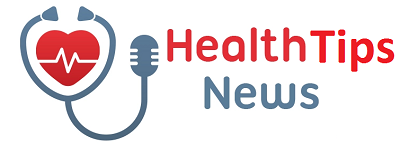According to a report by the SCC, ICUs in the US receive at least 5,000,000 patients a year. When a patient winds up in the ICU, then it’s most certainly usually a matter of life and death. A delay even in just a matter of seconds can prove the difference, which is why ICU monitoring services are particularly important and prominent in today’s clinical workflows. In this article, we’ll take a closer look at how ICU monitoring services like Techindia’s are helping to save lives, and what they bring to the table for both patients and facilities alike.
Immediate event detection
Of course, ICUs have smart alarm systems that can tell physicians when a patient experiences an adverse health event such as cardiac arrest. However, what if it were possible to predict it before it even unfolds?
Well, that’s exactly where ICU monitoring services are making a huge difference. For example, they contain automatic vital monitoring thresholds, which track the patient’s biometrics around the clock. So you’ll have the data that you need to know if and how fast a patient is deteriorating so that you can intervene well before they’re flatlining.
This automated way of ICU monitoring certainly trumps manual human monitoring, where intensivists watch for signs of deterioration, which may not always be so apparent or easy to detect.
Access to ready and life-saving support
Is there a shortage of intensivists? There mostly certainly is a dearth deficiency of intensive care specialties and this was very evident during the Covid pandemic. Fast forward and ICUs haven’t fared much better since then with statistics indicating that 27% of critical care nurses have left their roles since. In fact, WHO estimates an overall shortage of nearly 10 million healthcare professionals by 2030.
In light of these staffing shortcomings, ICU monitoring technologies are proving to be a real lifesaver. It is possible for understaffed intensivist teams to augment their workflows with third-party experience from board-certified critical care professionals who can assist with:
- Monitoring ICU patients
- Analyzing patient data
- Creating patient records
- Recommending treatment options, and so on.
The specialists can be beneficial if your clinical workflow lacks the technology, expertise, and experience that it needs to support your ICU.
Lower-risk transitions to higher or lower-acuity wards
While it may seem like a simple affair, transferring a patient from one care ward to another can also have a significant effect on the patient’s safety and health outcomes. Critical care transfers are generally very delicate and if they aren’t handled appropriately, you risk having an adverse incident on your hands.
That’s the best part about ICU monitoring services and technology. They can move with the patient to ensure that there isn’t a disruption in care continuity even during these periods of transition, thanks to an ecosystem of ambulatory technologies.
Furthermore, more experienced intensivist teams can hold the hand of critical care nurses, and guide them on how to secure the patient and generally observe the right critical care transfer protocols for a smooth and incident-free transfer.
Collecting data for improving clinical processes
When you outsource to ICU monitoring services, you also get a third-party perspective that can help assess and audit your current critical care workflow. Subject matter experts can monitor how your clinicians go about caring for the patient and generally analyze and scrutinize important details in your facility that aren’t usually obvious to pick out.
All in all, the right partner can be able to help you identify and eliminate various efficiency bottlenecks that help you improve your clinical workflow:
- Quality of service
- Safety standards
- Productivity
They can even collect and analyze feedback from patients and families via patient portals to help you identify ways that you can improve patient experiences and care as well.
Reduced clinical complications
Furthermore, just like how ICU monitoring specialists can help avert fatal health events, so too can they assist in minimizing medical complications like blood clots, healthcare-acquired infections, and so on to help boost patient comfort during this delicate time.
With critically ill patients very susceptible to various complications resulting from a compromised immune system, and the use of invasive equipment, your ICU partner can help you implement routine treatments and practices to help keep patients safe.
For example, they may guide hygiene protocols for all who access the ICU and can also set and enforce sterilization policies on your behalf. Beyond that, they can also liaise directly with patients using video and audio-conferencing technology, to help support ICU patients during moments of delirium and confusion.
Save lives, time, and money with Techindia’s ICU monitoring services
ICUs are often associated with death and disease but that can all change when you have the right e-ICU monitoring services by your side. For superior ICU technology that gives you instant alerts and early warning signs about clinical deterioration, be sure to visit the Techindia website for assistance. They can help you improve patient safety and outcomes, without expanding your IT infrastructure. Visit their website now for more details.

